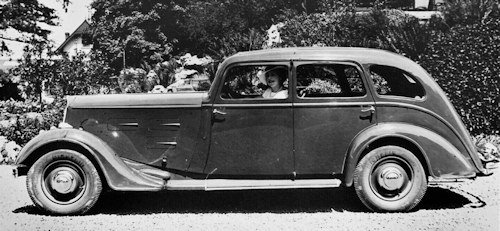Peugeot 601
 |
|
|
Make |
Peugeot |
|
Years of production |
1934 to 1935 |
|
Production |
3,997 built |
|
Class |
Motor car |
|
Motor (s) |
6 cylinders - 12 HP |
|
Displacement |
2,148 cc |
|
Maximum power |
60 hp |
|
Unloaded weight |
1,300 kg |
|
Bodywork |
Sedan, coupe, coach, roadster, convertible, eclipse, 17 in total |
|
Length |
4,600 mm |
|
Width |
1600 mm |
The Peugeot 601 is a car of the Peugeot brand produced from 1934 to 1935 .
History
The 601 succeeds the Peugeot 12-Six and is Peugeot's latest six-cylinder car for forty years built as the Type C and D. , which was built between February 1934 and July 1935. This is the successor of the Peugeot Type 183 . The 601 was equipped with a straight-six , 2148 cc and 60 hp. The numeral "6" in the model number 601 stems from the use of the six-cylinder engine. With a weight of about 1.4 tons, the 601 reached a maximum speed of 110 km / h. Like other models of Peugeot during this time, the 601 was equipped with independent front suspension. The Peugeot 601 cost depending on the variant from 28,500 to 34,000 French Francs,
The 601 was available in several different body styles. The first models were built as so-called "Berline". There was also a special aerodynamic sedan and finally the 601 was also built as a roadster and coupe . Later, in small numbers, a more than five meters long convertible ( Eclipse ) was built. The metal roof of the Eclipse models was electrically submerged in the rear of the vehicle. Georges Paulin was the designer of the 601 Cabriolet.
The model of the 601 was relatively unsuccessful because it was under- powered on the basis of an enlarged Peugeot 201 . Of the approximately 4,000 vehicles, around 160 each accounted for the Roadster and Cabriolet variants.
